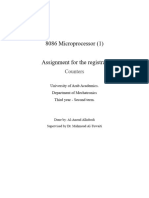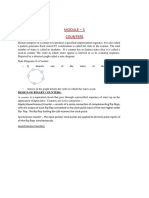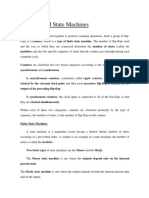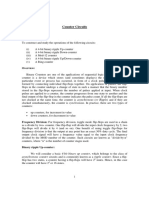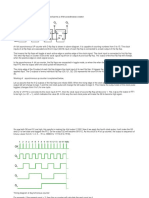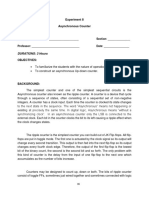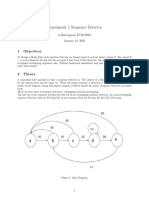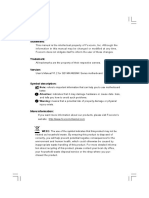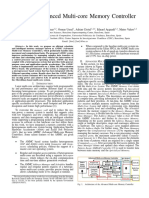0% found this document useful (0 votes)
21 views7 pagesLecture 27
The document discusses down counters and synchronous counters in digital logic design, explaining their operation and configurations. Down counters count from a maximum value to zero, while synchronous counters utilize a common clock signal for simultaneous state changes in flip-flops, addressing timing issues in asynchronous counters. The document also covers the implementation of multi-bit synchronous counters and a synchronous decade counter with specific Boolean expressions for their operation.
Uploaded by
shazar.alamgirCopyright
© © All Rights Reserved
We take content rights seriously. If you suspect this is your content, claim it here.
Available Formats
Download as PDF, TXT or read online on Scribd
0% found this document useful (0 votes)
21 views7 pagesLecture 27
The document discusses down counters and synchronous counters in digital logic design, explaining their operation and configurations. Down counters count from a maximum value to zero, while synchronous counters utilize a common clock signal for simultaneous state changes in flip-flops, addressing timing issues in asynchronous counters. The document also covers the implementation of multi-bit synchronous counters and a synchronous decade counter with specific Boolean expressions for their operation.
Uploaded by
shazar.alamgirCopyright
© © All Rights Reserved
We take content rights seriously. If you suspect this is your content, claim it here.
Available Formats
Download as PDF, TXT or read online on Scribd
/ 7









